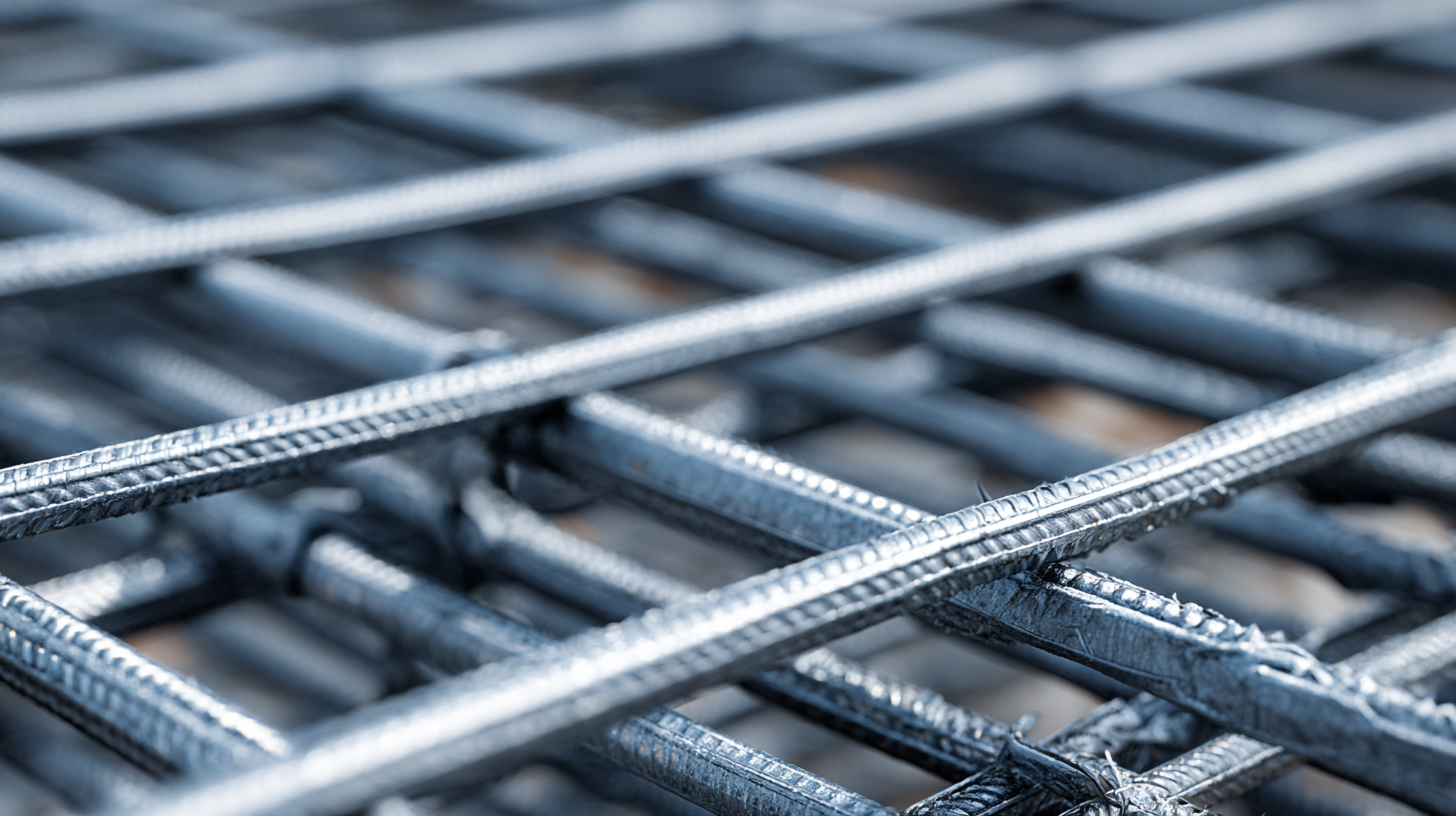Inquiry
Form loading...
- Phone
- E-mail
In the realm of modern engineering, the application of Geo Grid Mesh has emerged as a transformative solution across various industries, particularly in civil and geotechnical engineering. According to a report by MarketsandMarkets, the global market for geogrids is projected to reach USD 3.2 billion by 2025, driven by increasing demand for sustainable construction practices and infrastructure development.

Geo Grid Mesh not only enhances soil reinforcement but also optimizes load distribution, making it a vital component in projects ranging from roadways to retaining walls. As engineers strive for efficiency and resilience in designs, understanding the multifaceted applications of Geo Grid Mesh becomes imperative. This guide serves as a comprehensive resource for professionals seeking to harness the full potential of this innovative material in their projects, bridging the gap between theory and practical application.
Geo grid mesh is an innovative solution that has revolutionized modern engineering, especially in geotechnical and civil projects. This advanced material, often made from polymeric materials, is designed to reinforce soil structures, providing enhanced stability and load distribution. According to a report by the Geosynthetics Industry Association, the global geo grid market is projected to grow at a CAGR of 11.5% from 2021 to 2026, reflecting its increasing application in infrastructure development, including roadways, retaining walls, and slope stabilization.
When considering the integration of geo grid mesh into your projects, it’s important to understand the underlying principles. The mesh works by interlocking with soil, which increases the overall strength of the soil mass and allows for better weight distribution. This not only reduces the risk of failure in soil structures but also can lead to significant cost savings on materials and labor. Tips for effective application include ensuring proper installation techniques and consulting with experts for site-specific recommendations.
For optimal performance, it is crucial to choose the right type of geo grid mesh suited for your specific application. Factors such as soil type, load requirements, and environmental conditions will affect the performance of the mesh. Regular assessments should be conducted to monitor the integrity of the installed geo grid over time. Remember, timely maintenance can help prevent costly repairs and extend the lifespan of your engineering projects.
Geo grid mesh technology has revolutionized civil engineering projects by providing enhanced soil stability and support. One of the key applications lies in the construction of roads and highways. By incorporating geo grid mesh into the subgrade layers, engineers can significantly reduce the risk of deformation and settlement, ensuring a longer-lasting and more durable roadway. This innovative solution not only minimizes maintenance costs over time but also improves load distribution, making it ideal for heavy traffic scenarios.

Another vital application of geo grid mesh is in the reinforcement of retaining walls. As urban infrastructure demands grow, so does the need for effective solutions to handle earth pressure and soil erosion. Geo grid mesh enhances the structural integrity of retaining walls by distributing stresses over a wider area, which helps prevent failures and collapses. This application is particularly beneficial in areas with challenging geological conditions, where traditional materials may fall short in providing the necessary support. By harnessing the strength and adaptability of geo grid mesh, engineers can develop sustainable and reliable solutions for contemporary civil engineering challenges.
Geo grid mesh has emerged as a transformative solution in modern engineering, offering numerous advantages for soil stabilization and reinforcement. One of the primary benefits of geo grid mesh is its ability to distribute loads effectively across a larger area, which minimizes soil deformation and enhances the overall stability of foundations. This capability is particularly useful in construction projects on weak or unstable soils, where traditional methods may fall short. The lightweight and strong nature of geo grid mesh materials also leads to easier handling and installation, reducing labor costs and project timelines.
Additionally, the use of geo grid mesh significantly improves the longevity and durability of soil structures. Its resistance to environmental degradation ensures that soil reinforcement remains effective over extended periods, making it a sustainable choice for various applications, including roadways, retaining walls, and embankments. Moreover, the integration of geo grid mesh in engineering not only enhances structural performance but also allows for cost-effective solutions, as it often requires less material than conventional reinforcement methods. This combination of efficiency and effectiveness solidifies geo grid mesh as an essential tool for modern engineers tackling the challenges of soil stabilization.
| Dimension | Description | Load Capacity (kN/m²) | Typical Applications |
|---|---|---|---|
| Type A | High strength mesh | 200 | Road bases, embankments |
| Type B | Medium strength mesh | 150 | Retaining walls, slope stabilization |
| Type C | Low strength mesh | 100 | Aquatic environments, light traffic |
Geo grid mesh technology is increasingly being recognized for its innovative applications in environmental and transportation infrastructure. According to the latest report from the Federal Highway Administration (FHWA), using geogrids in road construction can improve the structural lifespan of pavements by up to 50%. This remarkable enhancement is achieved through the distribution of loads and reduction of deformation, which is critical for maintaining road quality in high-traffic areas.
In environmental projects, geo grid mesh plays a vital role in soil stabilization and erosion control. The International Erosion Control Association (IECA) highlights that incorporating geogrids in slope stabilization can reduce erosion rates by over 80%. This application is particularly important in areas prone to landslides or severe weather, where maintaining the integrity of natural landscapes is essential for ecological balance. As urbanization continues to encroach upon vulnerable ecosystems, the strategic use of geo grid mesh offers a dual benefit of bolstering infrastructure while protecting the environment.
The evolution of geo grid mesh technology is poised to redefine the landscape of modern engineering. As demands for sustainable infrastructure and efficient resource management intensify, innovative applications of geo grid mesh are emerging. These advanced materials, characterized by their high tensile strength and lightweight properties, are increasingly being integrated into soil stabilization, erosion control, and road construction projects. Engineers are now leveraging computational modeling to optimize the design of geo grid systems, enhancing their effectiveness in various geotechnical applications.
Future trends indicate a significant shift towards smart geo grid solutions, incorporating IoT technologies for real-time monitoring and data analysis. This development will enable engineers to make informed decisions quickly, improving safety and cost-efficiency during construction and maintenance. Additionally, ongoing research into bio-inspired designs is likely to yield geo grid mesh materials with enhanced durability and environmental benefits, promoting sustainability in engineering practices. As these technologies advance, the potential for geo grid mesh applications will expand, paving the way for more resilient infrastructure capable of adapting to changing environmental conditions.

